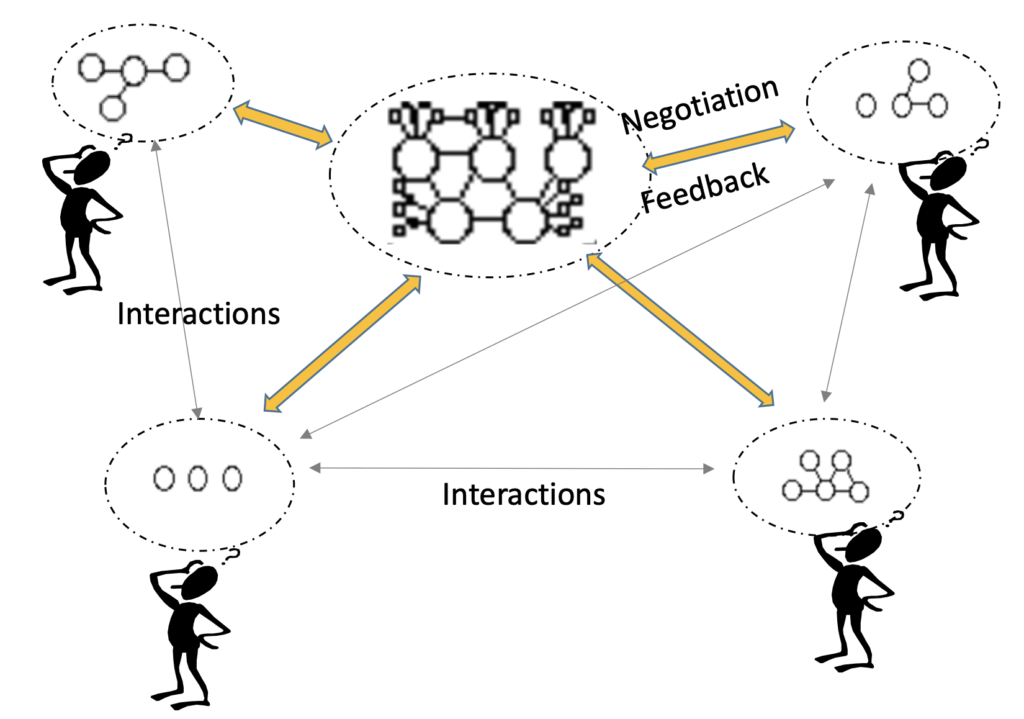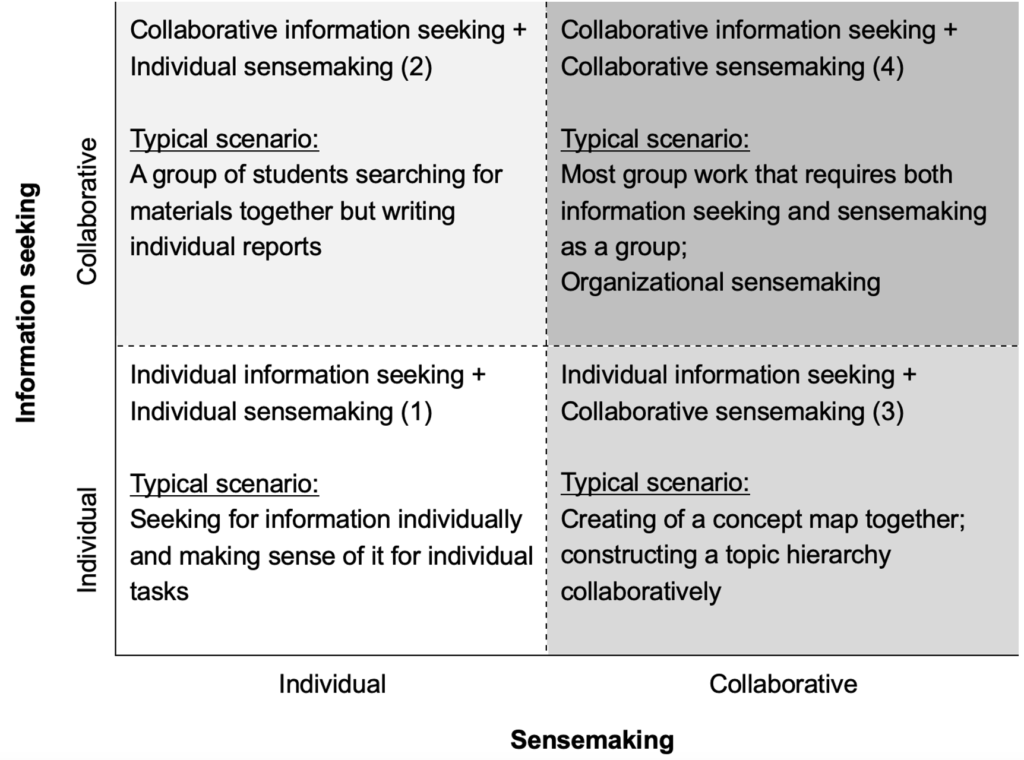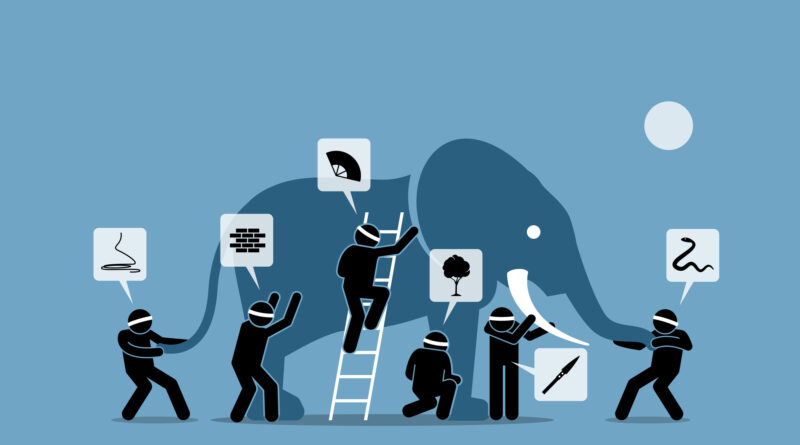Collaborative Sensemaking: The Starting Point of Intelligent Information Use by Teams and Groups
Collaborative Sensemaking: The Starting Point of Intelligent Information Use by Teams and Groups
Pengyi Zhang, Department of Information Management, Peking University, China
“What do people do with the information they have found?” Information behavior research has made much progress in information seeking, but relatively less in information use. This is perhaps due to the diverse work tasks that information is used for, ranging from simple factual question answering to complex tasks such as learning, problem-solving, decision-making, planning, writing, and so on, resulting in diverse conceptions of information use. Information use can be conceptualized as applying the information to a situation, bridging knowledge gaps, making connections to existing knowledge, producing new information, constructing knowledge, and so on (Kari, 2010).
Sensemaking, the process of forming meaningful representations of a task or problem’s information space (Klein, Moon, & Hoffman, 2006; Pirolli & Russell, 2011; Russell, Stefik, Pirolli, & Card, 1993), is the starting point of intelligent information use. During sensemaking, an information user needs to build on her previous knowledge, understand new information, and identify patterns to create an updated understanding of concepts and relationships (Zhang & Soergel, 2014, 2016, 2020).
—“How does a group of people make sense together?”—
“How does a group of people make sense together?” The sensemaking process occurs both at individual and collaborative levels. Example scenarios of collaborative sensemaking include a study group writing a report about certain topics and a UX design team constructing a customer journey map together. Individuals involved in the sensemaking process need to construct a knowledge representation and negotiate the representation with others to come to a collective understanding. Figure 1 shows an illustration of collaborative sensemaking. Each member constructs or has an initial representation and interacts with each other to negotiate meaning to construct a collective knowledge representation of structure and data involved in a task.

Collaboration has been defined in social and behavioral sciences as “a relational system” in which individuals in a group 1) share mutual goals and a common framework, 2) interact with each other under some sense of “fairness”, and 3) consciously choose to commit toward the common goals (Appley & Winder, 1977). With the advance of information and communication technologies, more and more collaboration takes place online and/or with the assistance of computers. Online collaboration manifests itself in more diverse ways than small-scale offline collaboration, with explicit or implicit intentions, various degrees of mediation, synchronous or asynchronous communications, and co-located or distributed participants (Golovchinsky, Pickens, & Back, 2009).
Many complex information tasks involve both information seeking (sensing) and making sense. In collaborative settings, information-seeking and sensemaking happen at individual and collective levels. Figure 2 illustrates the four different types of scenarios in which information seeking and sensemaking take place:
- individual information seeking + individual sensemaking;
- collective information seeking + collaborative sensemaking;
- individual information seeking + collaborative sensemaking;
- collaborative information seeking + collaborative sensemaking.

A typical (1) scenario would be for a journalist to seeking for information from various sources and write a news piece based on what she found. Scenarios (2)-(4) all have some collaborative aspects, (4) being the most complex requiring both information seeking and sensemaking done collectively as a group. To be able to fully understand (4), it is very important we study (2) and (3). An example scenario of (2) is for a group of people to construct an outline together for a report, the information seeking part is done individually but the construction of this structure has to be conducted collectively. An example scenario of (3) is for a group of people to collaboratively search for materials related to a case but write individual reports on that case. (2) roughly corresponds to the area of CIS (collaborative information seeking).
 Understanding these collaborative sensemaking processes (at its essence, the collective construction of knowledge structures) will advance our knowledge about how people construct, communicate and negotiate meaning, and allow us to design systems that support collaborative sensemaking. In order to do that, concepts and techniques from library and information science, information design and visualization, education, and learning theory should be brought together to build systems and services that assist users with and prepare them for learning and sensemaking in an information-rich world.
Understanding these collaborative sensemaking processes (at its essence, the collective construction of knowledge structures) will advance our knowledge about how people construct, communicate and negotiate meaning, and allow us to design systems that support collaborative sensemaking. In order to do that, concepts and techniques from library and information science, information design and visualization, education, and learning theory should be brought together to build systems and services that assist users with and prepare them for learning and sensemaking in an information-rich world.
References
Appley, D. G., & Winder, A. E. (1977). An Evolving Definition of Collaboration and Some Implications for the World of Work. The Journal of applied behavioral science, 13(3), 279-291.
Golovchinsky, G., Pickens, J., & Back, M. (2009). A taxonomy of collaboration in online information seeking. arXiv preprint arXiv:0908.0704.
Kari, J. (2010). Diversity in the conceptions of information use. Information Research, 15(3), 15-13.
Klein, G., Moon, B., & Hoffman, R. R. (2006). Making Sense of Sensemaking 2: A Macrocognitive Model. IEEE Intelligent Systems, 21(5), 88-92.
Pirolli, P., & Russell, D. M. (2011). Introduction to this Special Issue on Sensemaking. Human Computer Interaction, 26(1-2), 1-8.
Russell, D. M., Stefik, M. J., Pirolli, P., & Card, S. K. (1993). The cost structure of sensemaking. Paper presented at the Proceedings of the INTERACT ’93 and CHI ’93 conference on Human factors in computing systems, Amsterdam, The Netherlands.
Zhang, P., & Soergel, D. (2014). Towards a comprehensive model of the cognitive process and mechanisms of individual sensemaking. Journal of the Association for Information Science and Technology, 65(9), 1733-1756.
Zhang, P., & Soergel, D. (2016). Process patterns and conceptual changes in knowledge representations during information seeking and sensemaking: A qualitative user study. Journal of Information Science, 42(1), 59-78.
Zhang, P., & Soergel, D. (2020). Cognitive mechanisms in sensemaking: A qualitative user study. Journal of the Association for Information Science and Technology, 71(2), 158-171.
Cite this article in APA as: Zhang, P. (2022, October 25). Collaborative sensemaking: The starting point of intelligent information use by teams and groups. Information Matters, Vol. 2, Issue 10. https://informationmatters.org/2022/10/collaborative-sensemaking-the-starting-point-of-intelligent-information-use-by-teams-and-groups/






